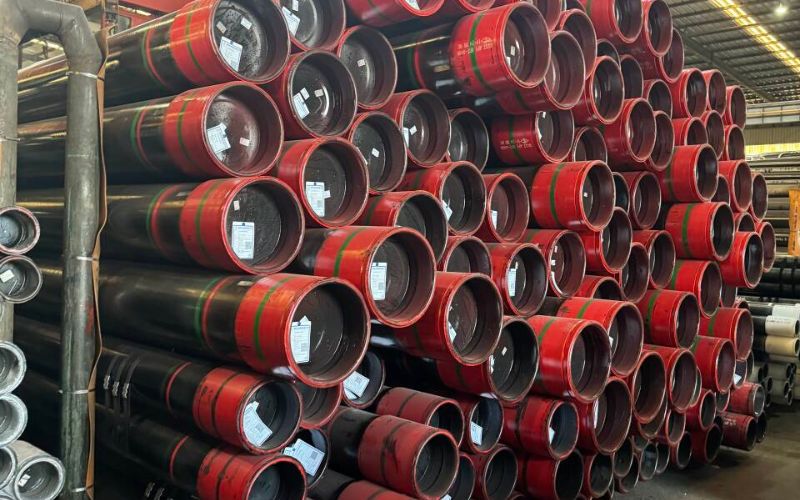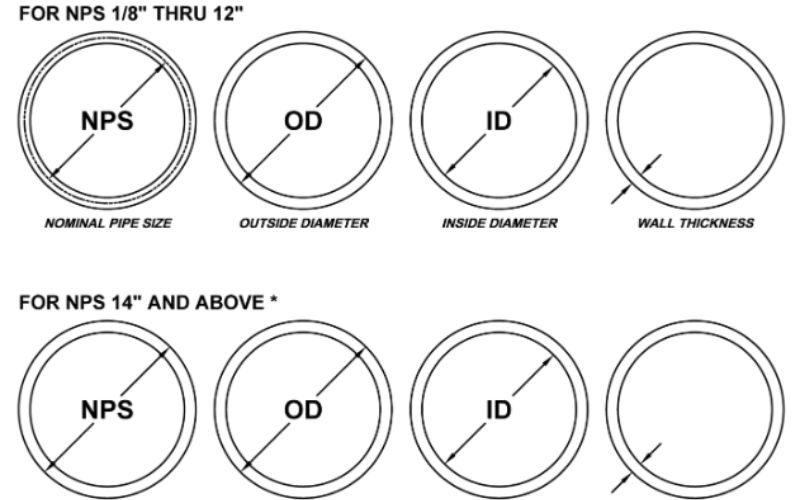When working with materials such as black steel, one heater question arises: does it rust? Understanding the chemical nature of corrosion and the role of protective coatings, such as black oxide, is essential for anyone working with or basing some construction, manufacturing, or even straight tool from steel. This article goes deep into the corrosive science of steel to unfold when and how rust occurs and to explore whether black oxide coating could prevent it. So, whether you are a contractor, an engineer, or a DIYer, the following guide must fill your toolbox with essential knowledge to assist in its wise application in protecting and maintaining black steel.
Understanding Black Steel
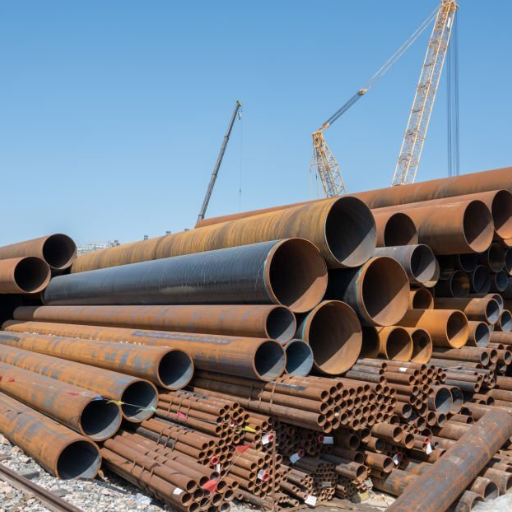
Being steel that is not coated or galvanized, it got its name from the dark iron oxide coating commonly called mill scale, that forms on its surface in the course of the manufacturing process. Such steel is considered favorable for use in construction, plumbing, and manufacturing since it boasts strength and versatility. Without any kind of protective layer in contrast with galvanized or stainless steel, black steel tends to rust if exposed to moisture and air. But being uncoated allows it to be welded and penetrated by other processes better, thus preferring it for certain applications.
Definition of Black Steel
Black steel is considered a raw material; it has a dark color created by mill scale thin layer of iron oxide generated during the hot-rolling process. The sheer strength and versatility of black steel have made it considerably sought after across various industries. A notable application of black steel in construction is the making of columns, beams, and brace systems, which are structural components due to their load-bearing nature and cost considerations. It is also preferred in pipeline systems, especially in transporting gas or water in environments that do not corrode the medium of transport, coming in handy under moderates pressures.
Another thing which makes black steel desirable is its weldability and machinability, perceived to be of top-grade. The surface itself is not put with any protective coatings or galvanized, allowing for direct cutting, fabrication, and welding. Black steel, however, if not protected with other protective paintings and finishes, highly susceptible to rust and corrosion when exposed directly to water, making it an ideal material only for indoor or controlled environment applications.
Common Uses of Black Steel
Black steel, with its properties and cheaper cost, is taken into account in a broad spectrum of industries. One of the leading uses of black steel is construction, where structural frameworks, beams, and columns are formed, and with this, they need to have a high tensile strength and durability. It is in designing houses and commercial and industrial buildings and carries great importance for stability and follow-up to long-term support. Moreover, due to their strength and ability to bear high pressure, black steel pipes are further suited for transporting natural gas, oil, and water.
Another major sector where dependency is on black steel is the automobile industry. From car frames to reinforcements, black steel produces safety and performance under unfavorable conditions. It wears up the resistance with the manufacture of heavy machinery and equipment, as well as supports the more complex mechanical operations.
Key Characteristics of Carbon Steel
Carbon steel is a unique material whose formal properties give it versatility for numerous applications. It chiefly has strength and durability factors, being best for structural and industrial custom uses. Depending on its carbon content (generally 0.05% to 2.0%), carbon steel is divided into low, medium, and high-carbon levels, each given to specific applications.
- Low-carbon steel consists of less than 0.3% carbon, the best amount of ductility, and is malleable, hence used for construction materials and automotive paneling.
- Medium-carbon steel contains between 0.3% and 0.6% carbon and strikes a balance between strength and toughness that find applications in machine and automotive part making.
- High-carbon steels, with above 0.6% carbon content, are too hard and are suitable for making cutting tools and springs.
Thus, being welcomed for thermal conductivity but also being well-machinable, carbon steel is very easy to manufacture. And hence it is cheaper than many other metals. Current industrial trends report the share of carbon steel production as beyond 50 percent of total steel production due to accessibility and wide application. Further performance enhancements are brought in by advanced alloying and treatment methods such as heat treatments and surface coating, providing long service life in harsh working conditions.
The Rusting Process
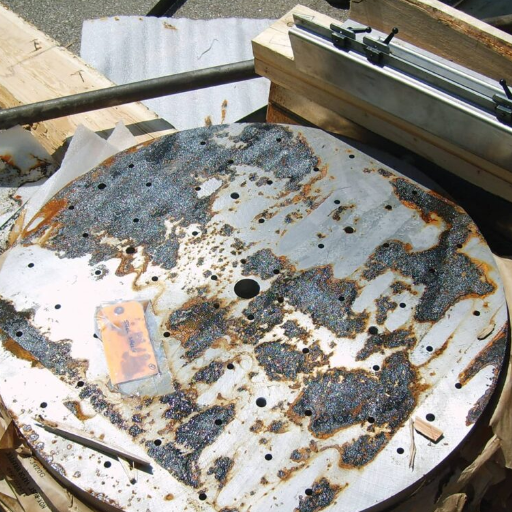
When rusting occurs, iron, or steel, is out in the open air, disappearing day by day in the presence of moisture. Or, rather, an oxidation process ends with rusting yellowish formation of iron. Rust brings about deterioration in structural metals by weakening their bond. Prevention of rust-patina can be afforded by merely coating metals, using rust-resistant materials, or properly maintaining the metals to prevent their exposure to water and oxygen.
What is Rust?
Rusting is a chemical phenomenon that normally occurs when metals, particularly iron and its alloys such as steel, react with oxygen in the presence of water or high moisture. The reaction is technically called oxidation while a reddish-brown powder-like substance named iron oxide is produced. Thus, apart from that the metal rust changes the esthetic value of metals, it rusts weaken and analyses the structural strength, as rust is incredibly brittle and flaky.
Before rust could develop under corrosion, this must be in a place with metal in continuous contact with moisture; hence, coastal regions, industrial environments in areas of heavy rainfall, or increased humidity. Some forms of prevention can include paints and coatings, using stainless-steel materials or galvanized metals, or, in addition, using cathodic protection or corrosion inhibitors. Such measures actually decrease economic losses and, at the same time, increase the time of unchallenged existence, along with safety, in critical structures and equipment.
How Black Steel Rusts Compared to Other Steels
Being a black steel—in other terms, carbon steel—is much more prone to rusting as opposed to some alloyed steels, which can blacken over time. In contrast to stainless steel, which includes chromium to create a passivating oxide film on its surface and thus avoids corrosion, black steel has basically no corrosion resistance attributes. Hence, when black steel is exposed to air and moisture, it will easily rust by oxidation.
Among other factors, it mainly lacks any coatings or finishes on its surface unlike black steel, which would otherwise be directly exposed to the environmental conditions. This means black steel would not resist humid or moisture conditions. On the other hand, galvanized and stainless steels are meant to resist rusting through coating (metallic zinc, for example) or alloying constituents (chromium and nickel in stainless steel).
While black steel might lose out to rust in a short time under certain environmental conditions, cheaper pricing and better mechanics have proven that the material is widely used in construction and manufacturing, whereby a first cost is more of an issue than corrosion at a later point in time. Protection can be afforded against rust in which case black steel may be painted, oiled, or even given anti-corrosion treatments to save the life of black steel products.
Differences Between Black Steel and Stainless Steel
Black steel is untreated and prone to rust, while stainless steel is corrosion-resistant due to its chromium content and polished finish.
| Property | Black Steel | Stainless Steel |
|---|---|---|
| Corrosion | Prone to rust | Rust-resistant |
| Finish | Matte, untreated | Polished, shiny |
| Durability | Moderate | High |
| Cost | Lower | Higher |
| Maintenance | High | Low |
| Applications | Structural use | Decorative, durable |
Factors Affecting Rust in Black Steel
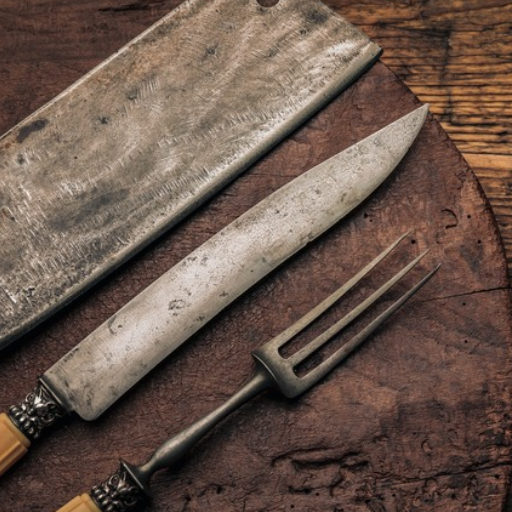
Major factors that rust black steel interface:
- Water: moisture formation favors rusting, as in high humidity, rain, or water falling on the surface of the steel, especially at high temperatures.
- Atmospheric Influences: The presence of salts in the air at coastal zones favors rapid corrosion.
- Surface Treatment: An unprotected black steel surface will rust readily, whereas a thin film of oil or paint will retard this action.
- Temperature Change: Frequent alterations in temperature from hot to cold could cause formation of condensation and increase corrosion risks.
- Impurities in Steel: Certain impurities in the steel may also reduce its resistance to rust with time.
On solving these problems, black steel could have its life span reasonably prolonged.
Environmental Factors Contributing to Corrosion
Corrosion is actually a very complex process, influenced by varied environmental parameters. The understanding of these contributing factors allows one to stop the degradation of materials and to warrant durability for the long term.
- Humidity Percentage: High relative humidity strongly promotes quick rusting. Provided the relative humidity rises above 60%, metallic surfaces will tend to get their moisture from the air, making an ideal set up for rusting. Areas close to the sea with consistent exposure to humidity and airborne salt will very quickly degrade any surface metal material.
- Presence of Chlorides and Salts: They are the agents of corrosion, the chloride particles in sea sprays, or road de-icing salt. These agents degrade protective coatings by inciting pitting and surface deterioration, which can lead to various types of rust. Research reveals coastal steel structures generally corrode much more, even five times greater, than those further inland.
- Air Pollutants: Industrial areas produce vast quantities of sulfur dioxide and nitrogen oxides to combine with water to yield acidic compounds. Having downpours of acid rain from these pollutants severely intensifies corrosion. For example, atmospheric corrosion rates have been found to increase significantly in areas of heavy industrial activity.
- Extreme Temperatures: Protective coatings on metals may get weakened when subjected to extreme temperatures for prolonged periods of time, exposing the metals to oxidation. When temperatures rise and fall, so does condensation; the cycle aids in corrosion formation by constantly offering moisture.
- Electrochemical: Environments rich in electrolytes, such as saltwater that will promote the electrochemical reactions leading to corrosion. This is especially in connection with any marine equipment and infrastructure, whereby continuous exposure usually calls for specialized anti-corrosion measures.
Working against these environmental factors through protective coatings, maintenance regimes, and the selection of materials is a good way to counteract corrosion and safeguard the very integrity of metal structures as time goes by.
Usage and Application Considerations
The consideration to use metal structures and their applications in environments subject to corrosivity determines coating and material selection. For instance, anti-corrosive paints of epoxy polyurethanes are generally applied as a standard because of their resistance to moisture ingress from rain and chemical attack. Records indicate that a good anti-corrosion coating can increase the life of metal structures for about 15–20 years, with almost zero maintenance needed subsequently.
To a certain extent, materials also come into play; for instance, stainless steel or aluminum would be excellent choices owing to their inherent resistance to corrosion. Sacrificial anode systems of zinc or magnesium metals are also used for extra protection in environments where marine engineering is practiced, particularly against blue rust. Recent reports have shown that almost 50% of corrosion-related failures can be decreased by the introduction of cathodic protection systems in order to maintain or enhance equipment longevity in hostile environments.
Regular maintenance procedures involving checks, cleaning, and timely repairs, on the other hand, help in spotting corrosion at an early stage and dealing with it on time before it morphs into something worse. By way of embracing emerging technologies, smart coatings made for self-healing and corrosion-resistant sensors are maintained actively. These improvements reveal the dynamic relationship between innovation and implementation in putting an end to corrosion across diversified industries.
Maintenance Practices Impacting Rust Formation
Maintenance is very crucial for less rust generation and increased longevity of materials. First, fair practice applies a protective coating of protection against moisture and oxygen, such as zinc-rich primer or an epoxy-based finish. Research shows that high-performance coatings can protect metal structures for up to 15 years longer, hence reducing replacement or repair requirements very much.
Drainage and ventilation should also be maintained well in places that have very high humidity. Consider having regular inspections and cleaning of your air conditioning and ventilation systems, a big culprit of condensation. Using desiccants or dehumidifiers in storage can also help to limit moisture.
Both periodic maintenance and the use of modern methods and tools work against rust and help save costs on operational grounds both in industrial and domestic applications. All of these speak to the importance of taking a proactive approach in material preservation.
Prevention and Maintenance Tips for Black Steel
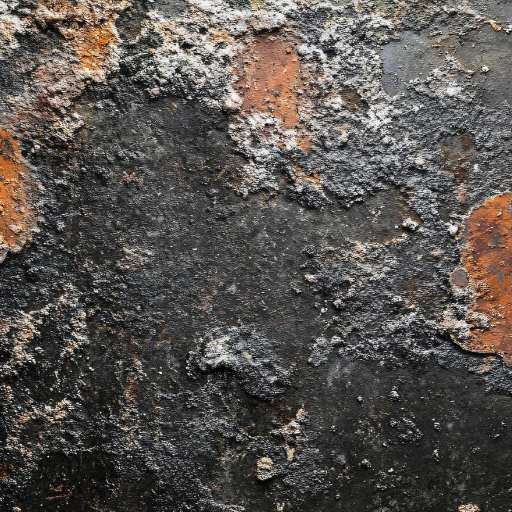
Prevent rust on black steel by applying protective coatings, seasoning, cleaning regularly, and storing in dry environments.
| Tip | Action | Purpose | Frequency | Key Tool |
|---|---|---|---|---|
| Protective Coating | Apply sealants to protect against the types of rust that can form on the surface of the steel. | Prevent rust | Annually | Rust-resistant paint |
| Seasoning | Heat with oil | Create barrier | As needed | High-viscosity oil |
| Regular Cleaning | Remove debris | Avoid moisture | After use | Soft cloth |
| Dry Storage | Keep dry | Prevent corrosion | Always | Ventilated space |
Effective Prevention Methods
Applications of Protective Coatings
Some of the most common protective coatings against rust and corrosion for black steel include epoxy, polyurethane, adhesion-promoting primers, or powder coatings. These coatings act as a protective layer between the steel and moisture and oxygen, both acting as agents of rusting. Epoxy coatings, for example, are great for industrial applications since they are very durable and resistant to chemicals. Studies say that if applied properly and maintained well, a good coating from special coating companies can extend the service life of a steel structure by 25 years.
Galvanization
Steel galvanization is a process of zinc coating that brings about near-permanent solutions of corrosion protection, particularly for those structures located outdoors. The protective patina is developed from the reaction of the zinc layer with atmospheric oxygen and therefore tends to slow down corrosion. Hot-dip galvanizing is especially recommended in that it may protect steel for more than 50 years under particular environmental conditions as has been reported in many studies.
Surface Flow of Treatment
A treated flow of steel from sandblasting would be the chosen method before any rust inhibitors or coatings are applied. These ensure that undesired deposits are removed and that the plasma steel surface is left rough with a certain degree of roughness needed for better adhesion of protective layers. Afterward, these days, however, nanotechnological advancements enter the scene for an even stronger fight.
Regular Maintenance and Inspection
Environmental Controls
The surrounding environment may accelerate corrosion, and sometimes it’s better to control the surrounding environment to prevent it. These methods include the control of humidity in enclosed areas through dehumidifiers, or the application of vapor-phase corrosion inhibitors (VCIs) while in storage. VCIs are indeed proven to work well even in tight spaces.
Non-Stainless Steel Alternatives
Maintaining stainless steel, with chromium present to create a passive oxide layer, can be avoided if practical. Considered to be costly upfront, stainless steel offers great corrosion resistance and longevity in most applications where utmost importance is given.
Thus, by integrating the above methods, black steel is kept strong and visually appealing across industries and environments, which in turn diminishes hazards and increases performance.
Importance of Regular Maintenance
Maintenance applied upon regular basis to materials, systems, or infrastructures shall guarantee their long service duration, increased efficiency, and safety. Proactive maintenance can trim repair costs by around 40% as it considers existing causes and remedies in instances where potential issues escalate. It is thus in order to say that within the construction industry, routine inspections and maintenance of materials such as black steel or stainless steel can forestall structural failures and restrict corrosion.
Moreover, maintenance allows machines to perform at their best. Studies demonstrate that poorly maintained systems can lose up to 20% efficiency, thereby increasing energy costs and operating costs. Scheduled maintenance becomes of paramount importance for industries that depend on machines to minimize machine downtime and avert high repair costs.
Regular maintenance remains very much an issue regarding safety. Considering one pertinent particular, the previous wear and tear of structures and equipment, such hazards are set up, thus compromising the safety of personnel and their environment. Routine inspections translate into better longevity, a safer and more efficient work environment. Maintenance thus remains an important consideration, as it prolongs the life of their assets while making them cost-effective and efficient.
Storage Recommendations to Avoid Rust
Reference Sources
-
University of Florida – Avoiding Corrosion Problems
This document discusses how steel, including black steel, can rust and the role of coatings like zinc in preventing corrosion, especially at high temperatures.
Link to source -
MIT – Corrosion Resistance of Concrete Reinforcement, particularly in relation to cast iron applications.
This study explains how steel naturally forms an iron oxide (rust) layer in the presence of water and oxygen.
Link to source -
University of Kansas – Evaluation of Corrosion Protection Methods
This research evaluates corrosion in black steel specimens and compares it to other materials under various conditions, specifically focusing on the types of rust that may develop.
Link to source - Top Black Steel Pipe Supplier In China
Frequently Asked Questions (FAQs)
Yes, rust will indeed start to form on black steel in a moist atmosphere. This, if we consider that rust formations need moisture and oxygen to form, will obviously depend on whether the black steel has been treated with some sort of protection against rust or adequately maintained. The black steel would be most susceptible to rusting if it is bare steel without any sort of protection.
Black steel can give a number of rusts, including the common red rust and the special black rust. Red rust, iron oxide, forms a loose flaky surface, whereas black rust forms magnetite under certain conditions and can be considered as providing some protection if it sufficiently covers the surface.
Rust can be removed from black steel by using a wire brush or steel wool by rubbing it on the rusty surface. For heavier rust, consider the rust removers or chemical treatments otherwise applied to metal surfaces. After significant rust removal, wash fine, and an excellent thin coat of oil enhances its corrosion resistance.
This finish does help by way of a thin protective layer in resisting corrosion on steel. But they will not be rust proof. The finish will need to be maintained and have other protective coatings applied for extended life to worry about rust effectively.
Yes, indeed. Chemical treatment processes can enhance the rust resistance of black steel. These include oxide treatments that can pickle the surface of the steel to enhance protection. They allow iron to be gently converted into a less uncertain or relatively unstable phase to minimize rust formation on steel when initially bestowed with moisture and oxygen.
High carbon steel is more prone to rusting than low carbon steels if not treated properly; after all, it contains a higher percentage of carbon and iron and acts more aggressively in corrosive environments. Double protective measures can be applied to avoid this risk, like coatings and oils.
The initial surface conditions of steel strongly influence rust formation. A clean and smooth surface is less prone to rust formation compared to one with scale and rust. If black steel is left inadequately prepared or treated, it starts rusting very fast as soon as moisture is present.
Keep black steel in a dry place and prevent it from exposure to moisture. Watch out for the presence of rust on metal surfaces and clean it using wire brushes or steel wool when there is any; additionally, rinse the area to remove debris. Oil applied to it can create a protective layer against rust.



